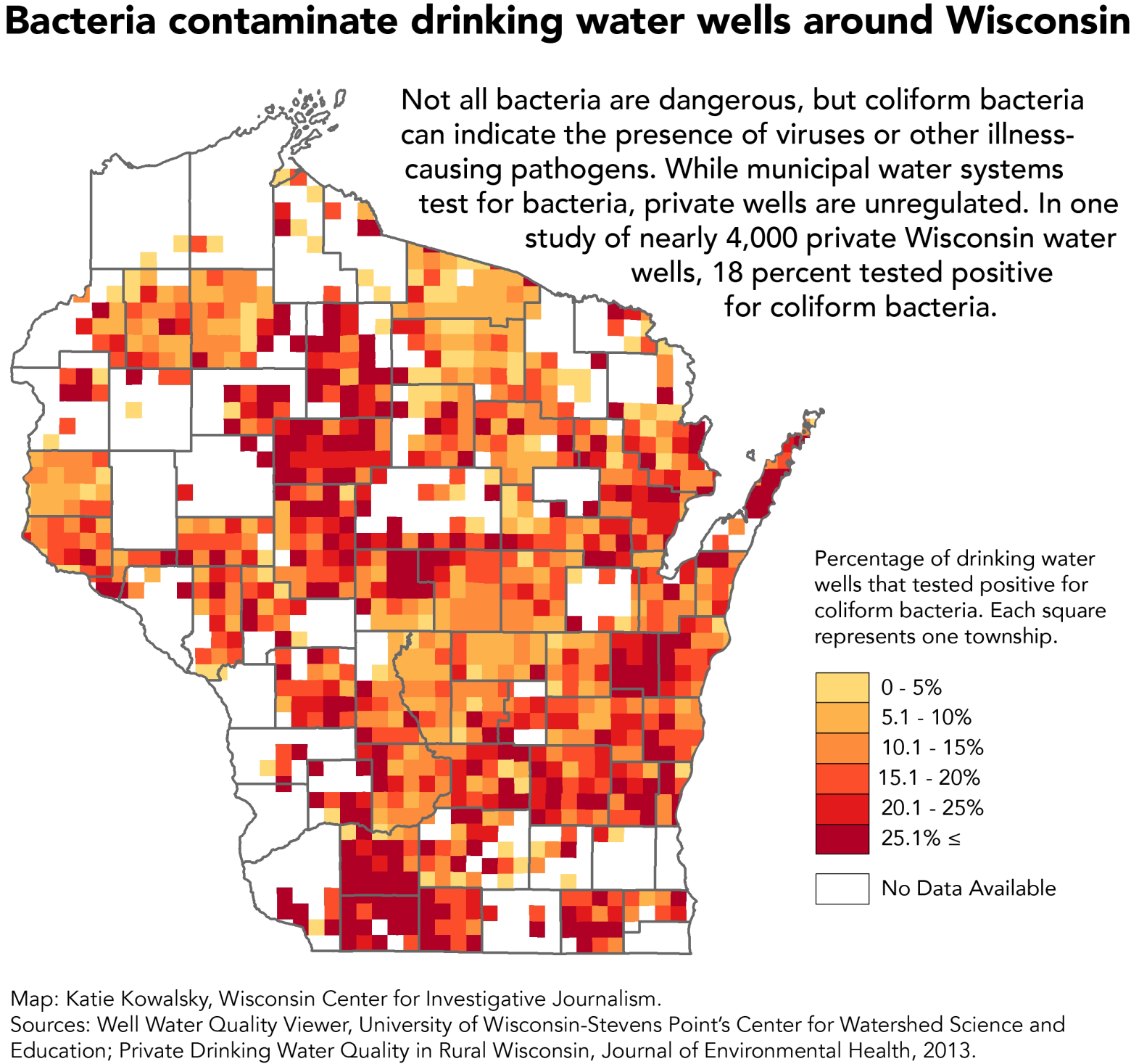by Sheridan Ash, Gathering Ground intern
Because the question of wastewater is a timely issue right now on the Island and throughout Door County, Gathering Ground asked its intern Sheridan Ash to attend the Door County Environmental Council talk with Dr. Mark Borchardt in Egg Harbor earlier last month.
“What you put on the land, you will drink,” microbiologist Dr. Borchardt explained at his lecture at the Egg Harbor Kress Pavilion on June 19. It’s the general rule of thumb when it comes to ground water. This is especially true of the peninsula and Island, elaborated Borchardt, where shallow topsoil and fractured bedrock come together to create the ideal conditions for water contaminants to spread rapidly. Dr. Borchardt specifically studied the Kewaunee area, a county that, as of 2016, produced 700 million gallons of cattle manure per year, and contains upwards of 4000 septic systems. Researchers involved in Borchardt’s study specifically tracked coliform, an indicator bacteria from human fecal matter, nitrates, and any microbes found in the samples.
The study had three main objectives: to estimate the contamination rate for nitrate and coliform as related to depth-to-bedrock, to determine the source of fecal contamination, and to identify the risk factors for well contamination. The results showed that fecal contamination in Kewaunee is due to both human and bovine sources, indicating that agriculture and septic systems are to blame. Additionally, in Kewaunee county there is over a 50 percent chance of high nitrate concentration, which is shockingly high compared to the state average of around 7 percent. Borchardt’s study found that the area of the closest cropped field, as well as the distance to the agricultural field and manure lagoons were factors that significantly correlated with the high nitrate levels.
Borchardt stressed these issues cannot be “constructed away,” but are mostly due to the geological makeup of the land in the Door and Kewaunee counties. In fact he showed pictures of water taken from up-to-code wells in Kewaunee, in which the water was a dark brown color, to further emphasize his point.
At the close of his presentation, Borchardt showed a clipping from an article from 1955 in a Door County newspaper that detailed an outbreak of disease from drinking water contaminated due to the shallow topsoil and immense fracturing of the bedrock. He expressed that although this issue is far from new, there have been very few regulations or improvements made to prevent contamination in the 64 years since that article was written. Perhaps there has not been much past research or dialogue on this issue because other areas are not as easily affected as we are here in Door County, but Borchardt’s data clearly shows that we need to look for solutions, the sooner the better.





0 Comments